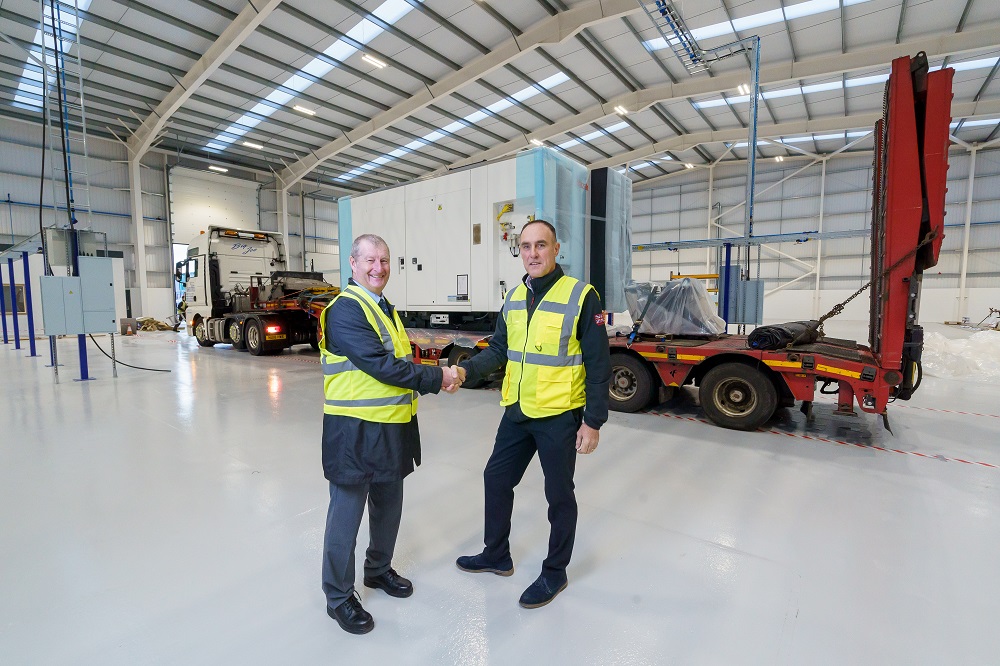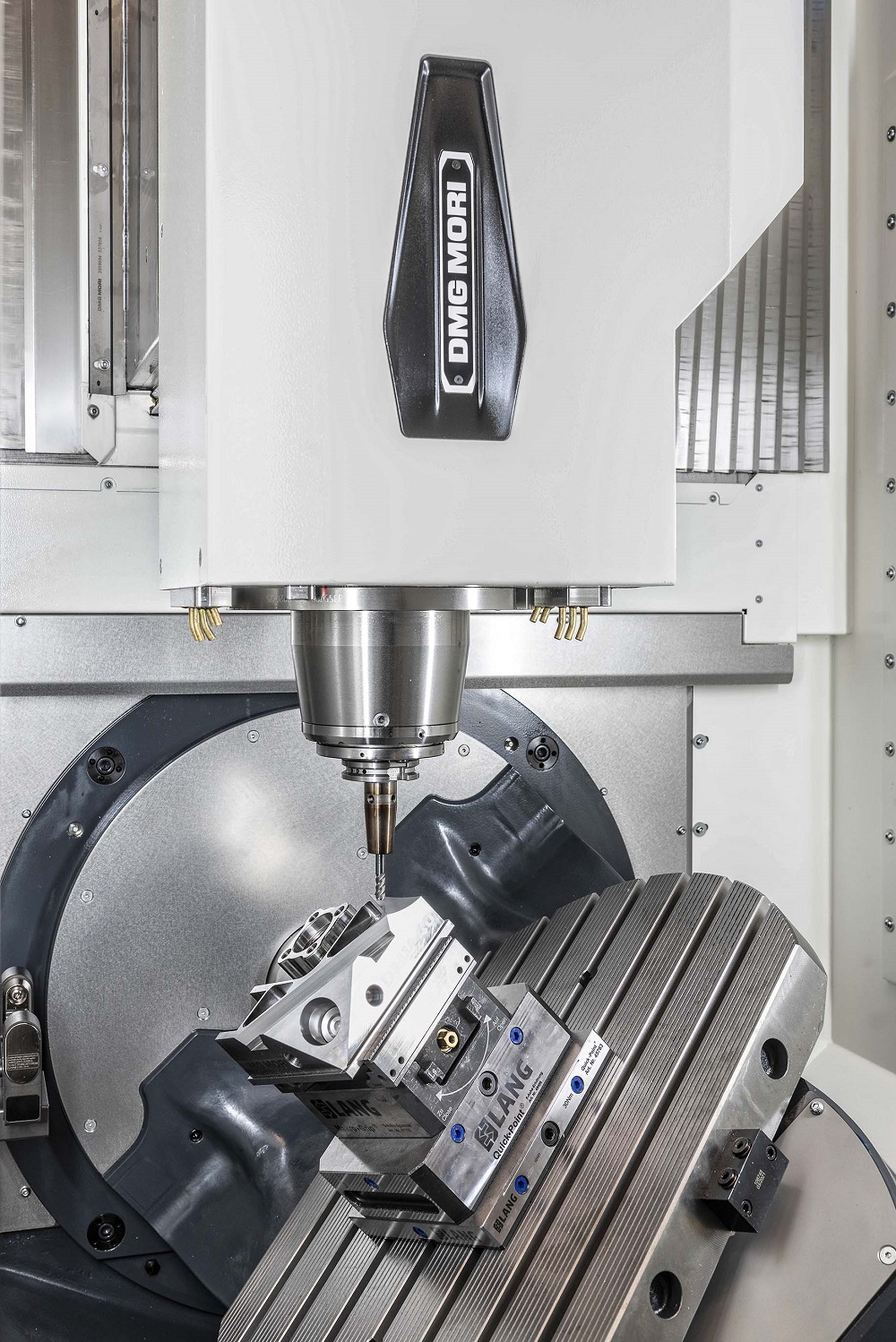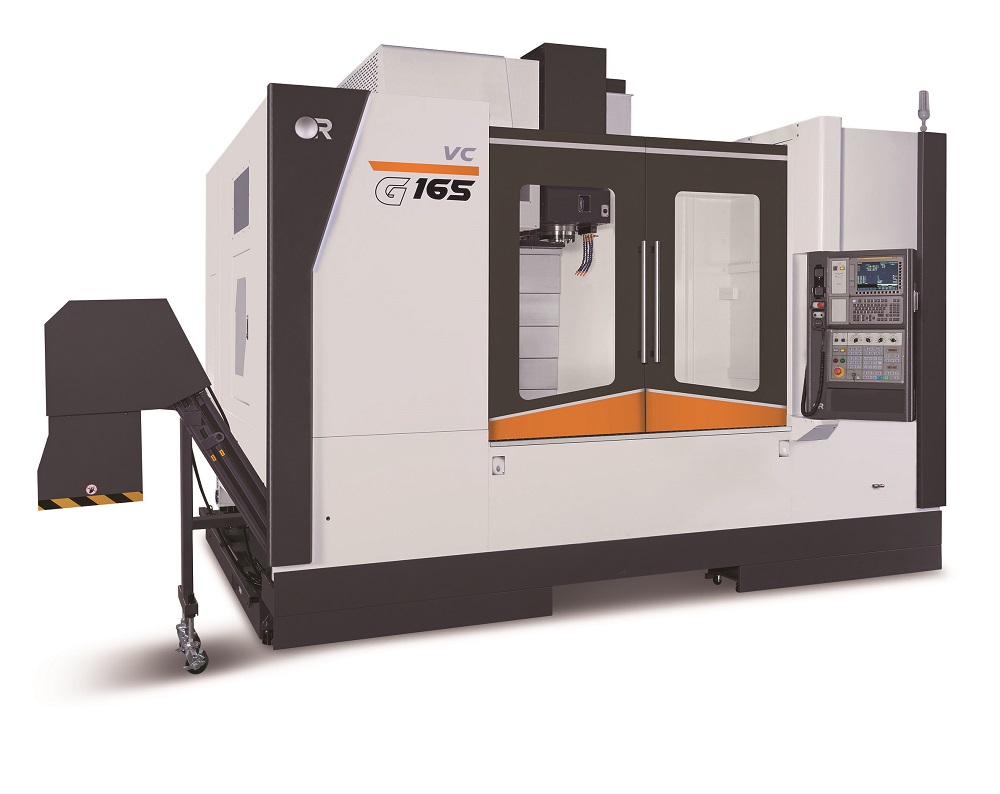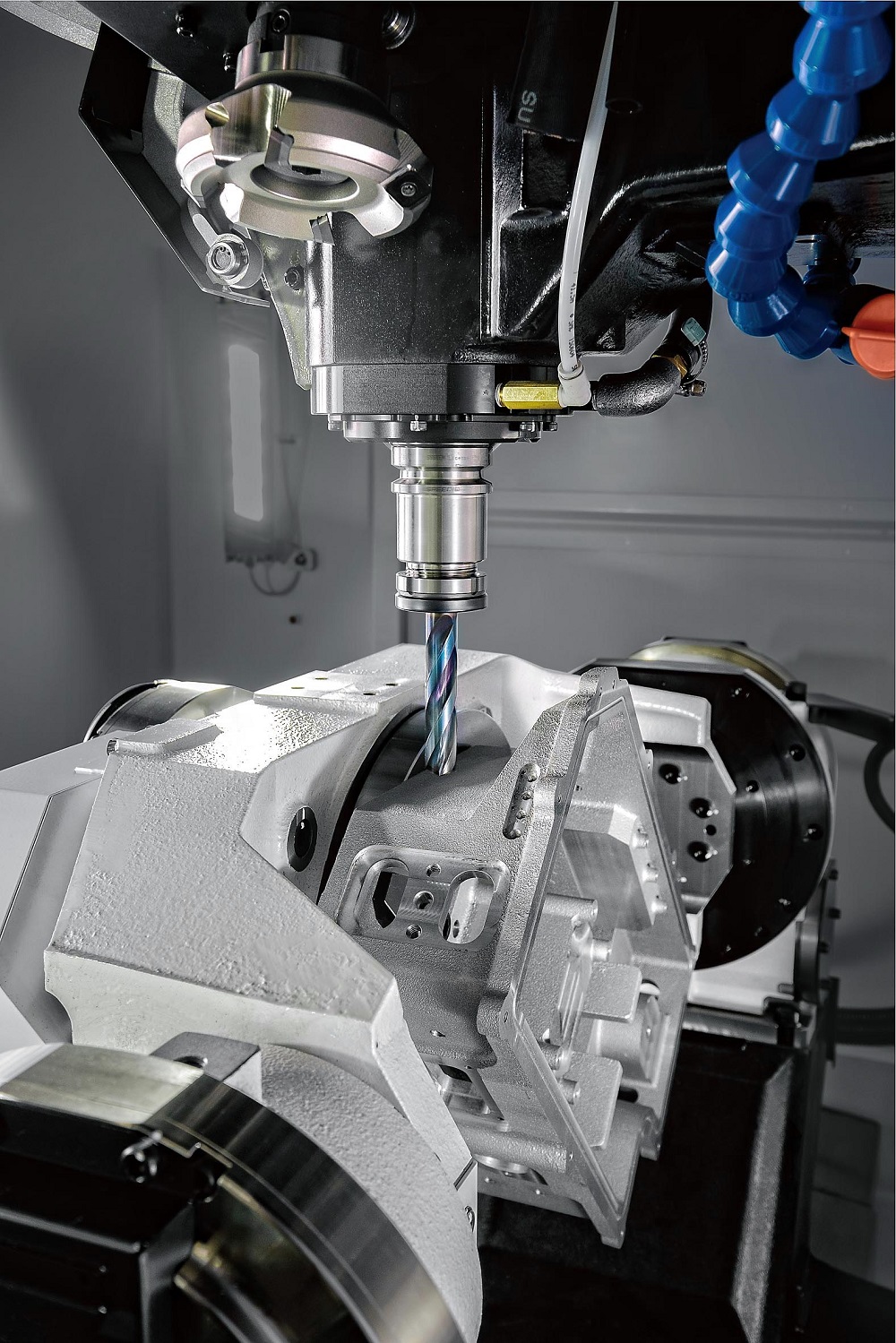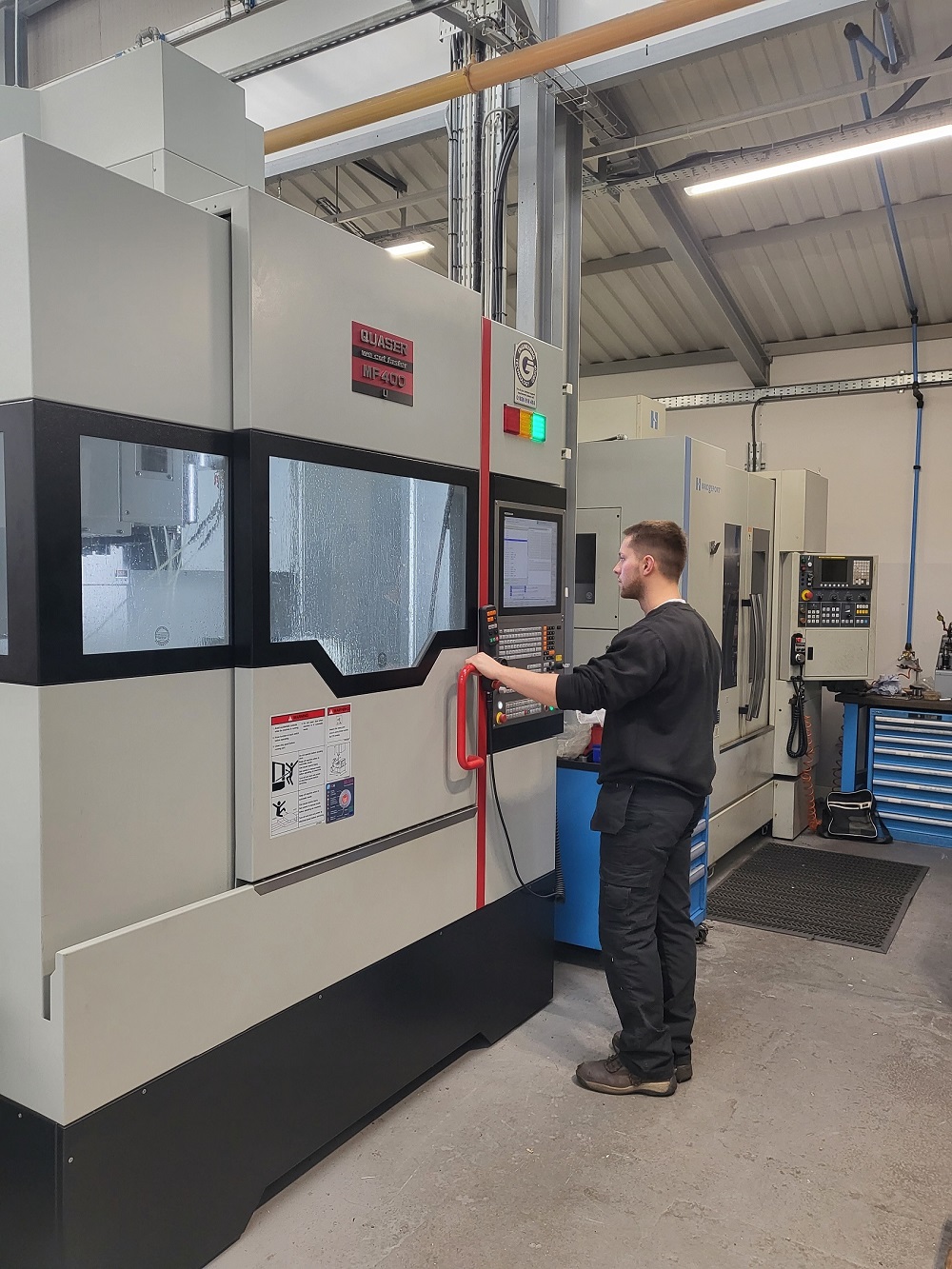NTG has put its first machine into a new facility in Gateshead and at the same time increased its five-axis machining capacity.The subcontract manufacturer remains on the Team Valley Trading Estate in Gateshead, but has massively increased the size of its premises, up to 45,000 sq ft, from 18,000 sq ft.The first machine into the new facility is a new Mazak VariAxis i-800 NEO.
Mike Hutchinson, group managing director at NTG Holdings, says the investment in both the new facility and the new machining technology opens up opportunities for his company: “Our five-axis capability has become a bottleneck due to demand from customers for this type of complex work. The new machine will enable us to offer shorter lead times by reducing the restrictions around our five-axis work.”
The VariAxis i-800 NEO is a five-axis vertical machining centre that delivers advanced high-speed multiple-surface machining in a large machining area. It will be followed by another 50 machines that will be transferred to the new facility in the coming weeks, including Mazak turning centres, Integrex multi-tasking machines and vertical machining centres.
“We’ve increasingly diversified the business from its roots as predominantly a tooling and oil and gas focused supplier,” explains Hutchinson.“We now operate across defence, food production, energy, subsea, electric vehicles and renewables. The new facility will give us the footprint to be able to continue to grow and service all our sectors, while also giving us the footprint to introduce more capacity and new technologies in the future.”
Mazak has been a long-time partner for NTG, helping the company make the move into complex five-axis work more than a decade ago.
For further information www.mazakeu.co.uk






